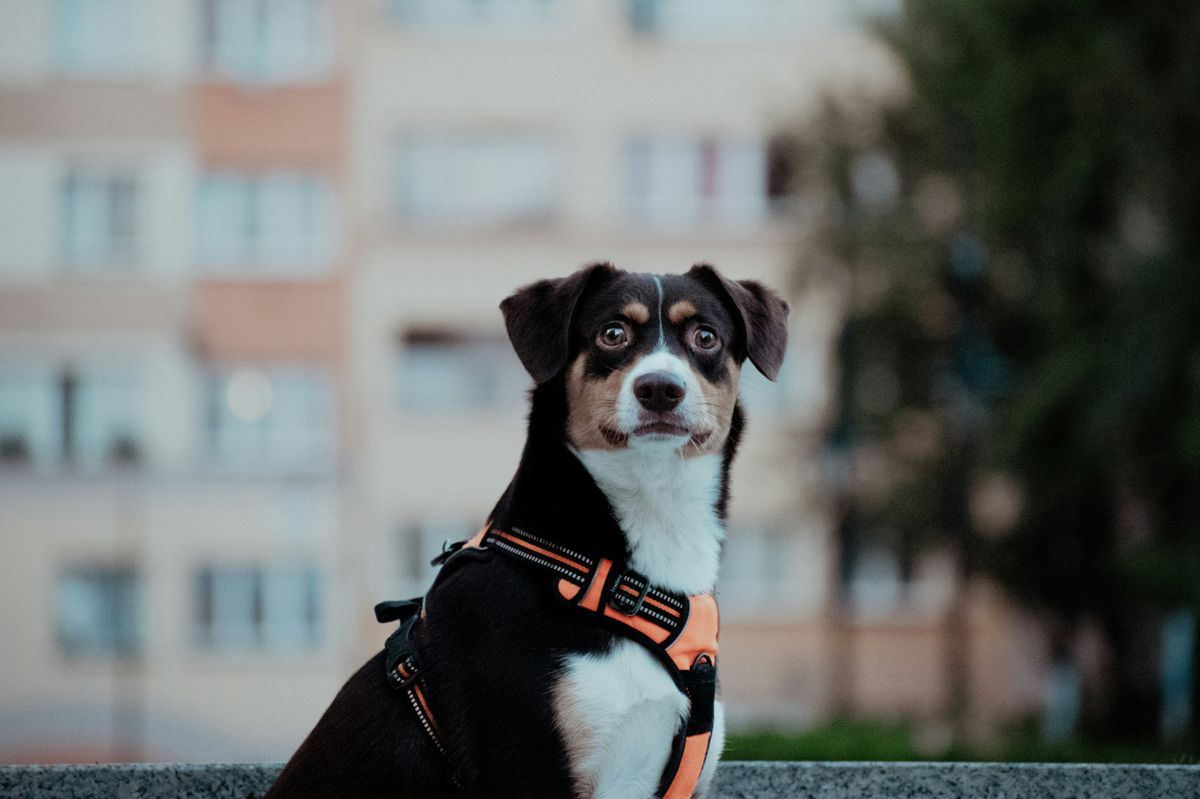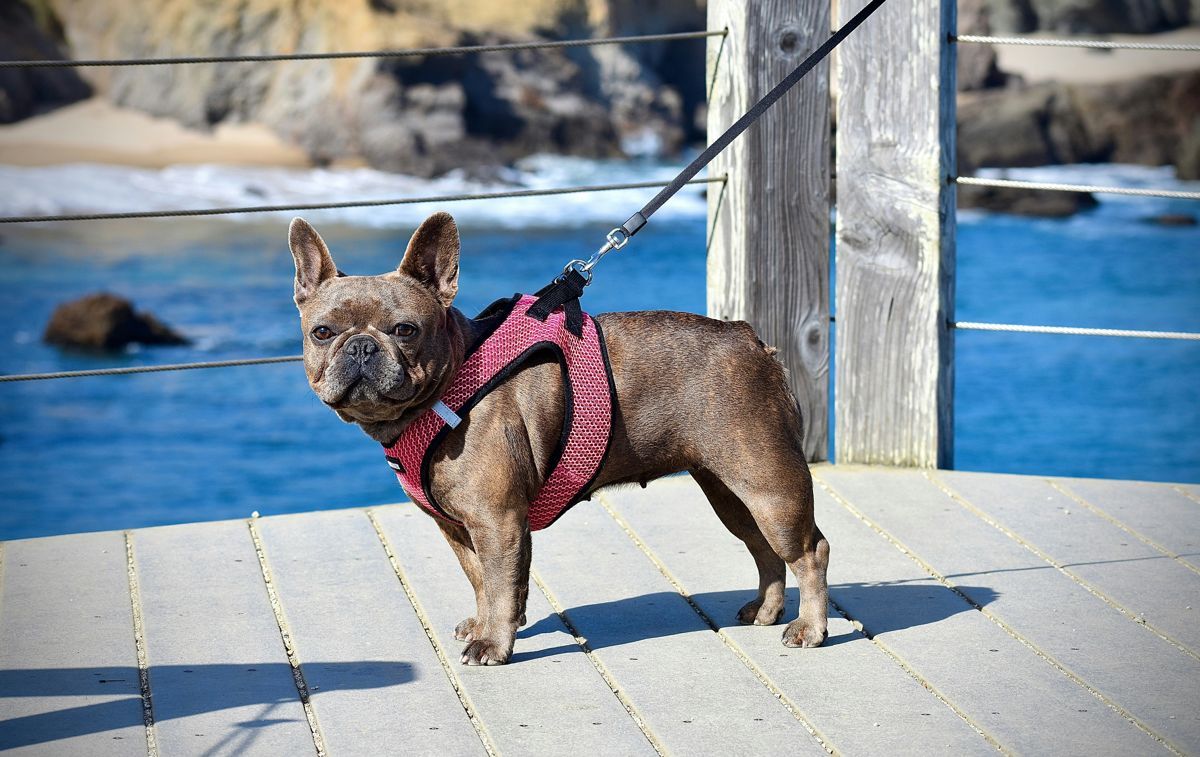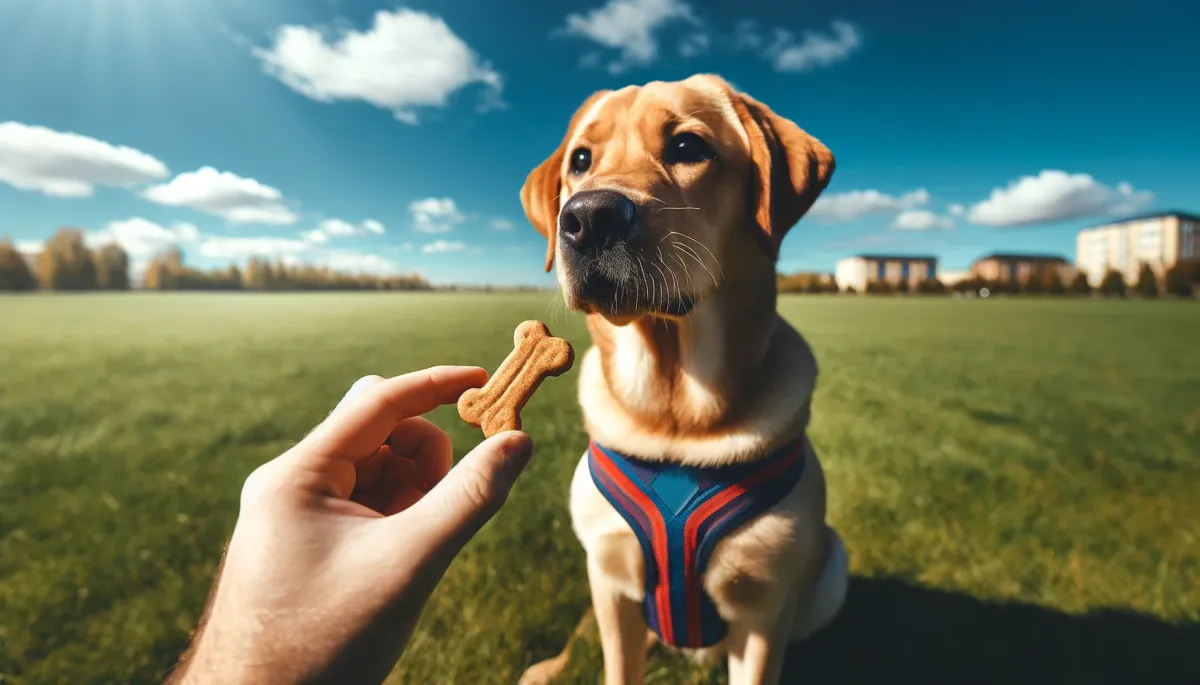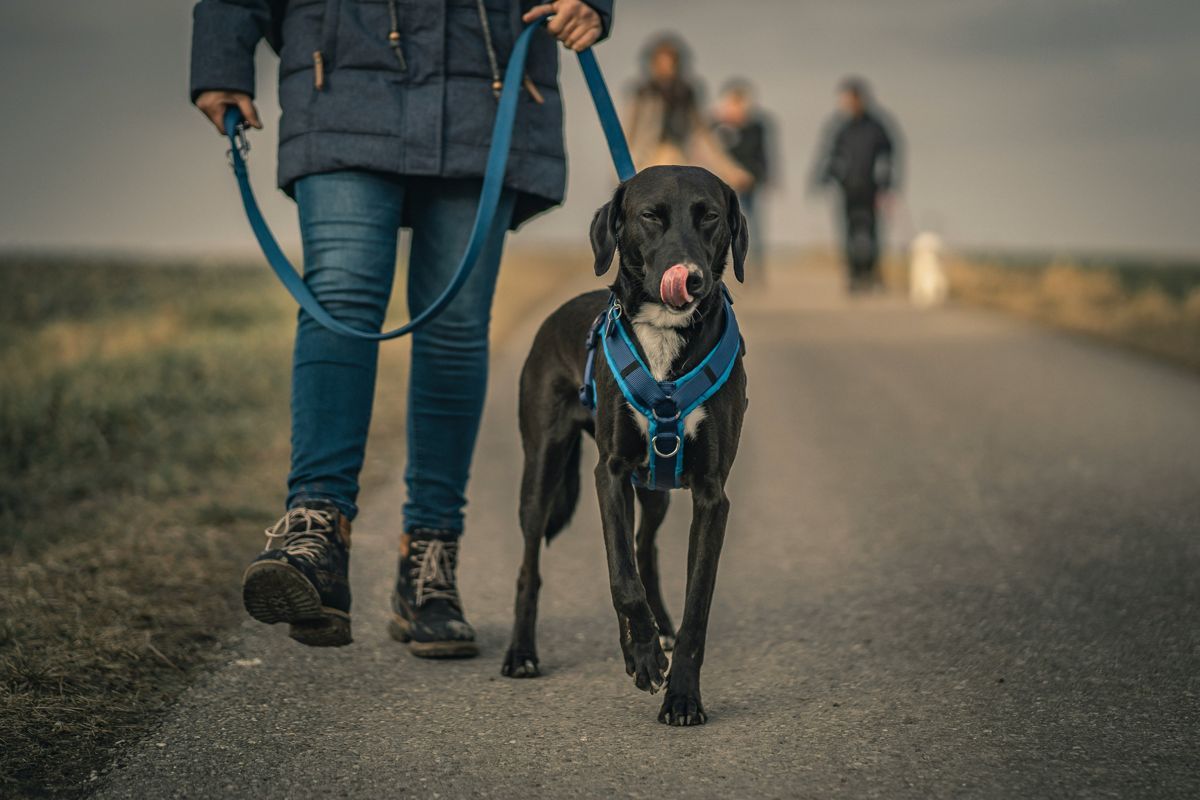When it comes to walking our four-legged companions, comfort and safety are paramount. Many dog owners are now turning to an essential accessory: the dog harness.
A practical alternative to the traditional collar, the harness offers a more enjoyable and secure walking experience for your dog. But how can you get your dog used to this new equipment, and what should you know before getting started? This article guides you step by step to ensure your dog adopts their harness enthusiastically.

Why Choose a Harness for Your Dog? #
The first question many owners ask is: why choose a harness instead of a simple collar? The answer lies in the multiple benefits a harness provides for both your dog’s health and comfort. Unlike a collar, which applies pressure to the dog’s neck when they pull, the harness distributes this force more evenly across the chest, reducing the risk of injuries to the trachea or cervical vertebrae.
Additionally, harnesses offer better control over energetic dogs or those learning leash walking. This makes walks less stressful for both the dog and the owner, improving their bond.
Dog Harness: Options and How to Choose the Right One #
Selecting the right harness for your dog can greatly enhance their comfort and safety during walks. Here are some types of harnesses and tips for choosing the most suitable one:
- Vest Harnesses: Ideal for dogs with sensitive skin or those needing extra comfort. These distribute pressure well and are often soft and padded.
- Clip-On Harnesses: Easy to put on and take off, making them perfect for dogs that dislike having objects passed over their heads.
- Sports Harnesses: Designed for intense activities like running or hiking. These are durable and often feature added functionalities like reflective straps or pockets.
- No-Pull Harnesses: Recommended if your dog tends to pull on the leash during walks. With chest-level attachments, their design discourages pulling by applying gentle pressure.
- Car Safety Harnesses: Specially designed for canine co-pilots, these are essential if you frequently travel by car with your dog. They help prevent injuries during sudden braking or accidents.

Tips for Choosing the Best Harness #
To select the right harness for your dog, consider their size, breed, and behavior. There are many models available, so ensure the harness fits well.
Make sure the harness is properly adjusted: a harness that’s too tight can cause discomfort, while one that’s too loose may let your dog escape. Trying the harness before purchasing is always recommended for a perfect fit.
Also, don’t forget: the quality of the materials matters! To ensure your dog’s comfort and the harness’s durability, choose sturdy fabrics with reinforced stitching and a soft, breathable lining.
How to Get Your Dog Used to a Harness #
Getting your dog accustomed to wearing a harness may require patience. Follow these steps to introduce the harness smoothly.
✅ Step 1: Gradual Introduction #
Start by leaving the harness near your dog, where they can sniff it, see it, and get used to it at their own pace.
✅ Step 2: Associate the Harness with Positive Experiences #
Whenever your dog touches or shows interest in the harness, reward them with treats or petting. This creates a positive association between the harness and things your dog loves.
✅ Step 3: Try the Harness for Short Periods #
Gently put the harness on your dog for short periods while staying indoors. Begin with a few minutes and gradually increase the duration.
✅ Step 4: Distract Your Dog While They Wear the Harness #
While your dog is wearing the harness, engage them in their favorite games or give them simple tasks to distract them from the new sensation. This helps normalize wearing the harness.
✅ Step 5: Take Short Walks with the Harness #
Start with short walks around your home or in a calm environment where your dog feels safe. This helps them adjust to the harness in a reassuring setting while associating it with the activity of walking.
✅ Step 6: Monitor and Adjust the Harness as Needed #
Ensure the harness is properly fitted, neither too tight nor too loose, and regularly check for potential friction points.
✅ Step 7: Gradually Increase Walk Duration and Variety #
Once your dog is comfortable wearing the harness on short walks, begin introducing them to more diverse and dynamic locations. This could include parks, busier streets, or new walking terrains.

Patience is key throughout the process. Encourage your dog with continuous rewards and positive reinforcement, keeping in mind that every dog is different and may take varying amounts of time to adapt.
Using Minitailz with a Dog Harness #
More and more people are opting for a harness for their dogs. If you’ve chosen a model with thin straps, great news: you can easily attach Minitailz to it. This allows you to track your dog’s location and their walking time! To optimize tracking, ensure the GPS tracker is placed as high as possible on the harness.
Once you’re back home, remember to replace your dog’s harness with their collar. Harnesses are intended for walks only and aren’t suitable for continuous use. After putting the collar back on and attaching the Minitailz, you can monitor all the data you need to ensure their well-being: their health, activity level, and movements.
Learn MoreDisadvantages of Dog Harnesses #
Harnesses are a great way to ensure your dog’s comfort during walks. However, like many dog accessories, they have their drawbacks. Here are some common challenges and suggestions to address them:
Increased Leash Tension #
-
Higher Tension: A recent study published in the Journal of Veterinary Behavior (2024) shows that dogs exert an average of 60% more leash tension when wearing a harness compared to a collar. This force is even greater in small dogs, who pull more relative to their body weight. These findings align with a previous study by Shih et al. (2021) on the impact of harnesses on pulling behavior.
-
Consequences: Increased tension can cause discomfort, frustration, and discourage owners from regularly walking their dogs. Lack of exercise is linked to various health and behavioral issues. Regular exercise is essential for maintaining health and strengthening the bond between pet and owner!
-
Solutions: To address this problem, consider:
- Leash Training Methods: Positive reinforcement techniques can help reduce pulling.
- Alternative Accessories: Try tools like head collars, often recommended for dogs with pulling issues.
- Behavioral Experts: Consult a qualified dog trainer to personalize solutions for your situation.
Fit Issues #
-
Too Tight: A tight harness can cause discomfort or even injuries. Ensure you can fit two fingers between the harness and your dog’s skin.
-
Too Loose: A loose harness may allow your dog to escape or get hurt. Regularly check the fit, especially if your dog has lost or gained weight.
-
Signs of Discomfort to Watch For:
- Excessive Scratching: If your dog scratches more than usual, it may indicate the harness is irritating their skin.
- Changes in Gait: Alterations in walking patterns can signal that the harness is causing discomfort.
Tips for Proper Harness Adjustment #
- Check Tutorials: Many manufacturers offer videos or guides to help you correctly adjust their harnesses.
- Get Help for the First Adjustment: A professional or experienced seller can assist with the initial fitting.

By following these tips, you and your dog can enjoy many comfortable and safe walks. Remember: patience is key to giving your dog time to adapt to their harness!

